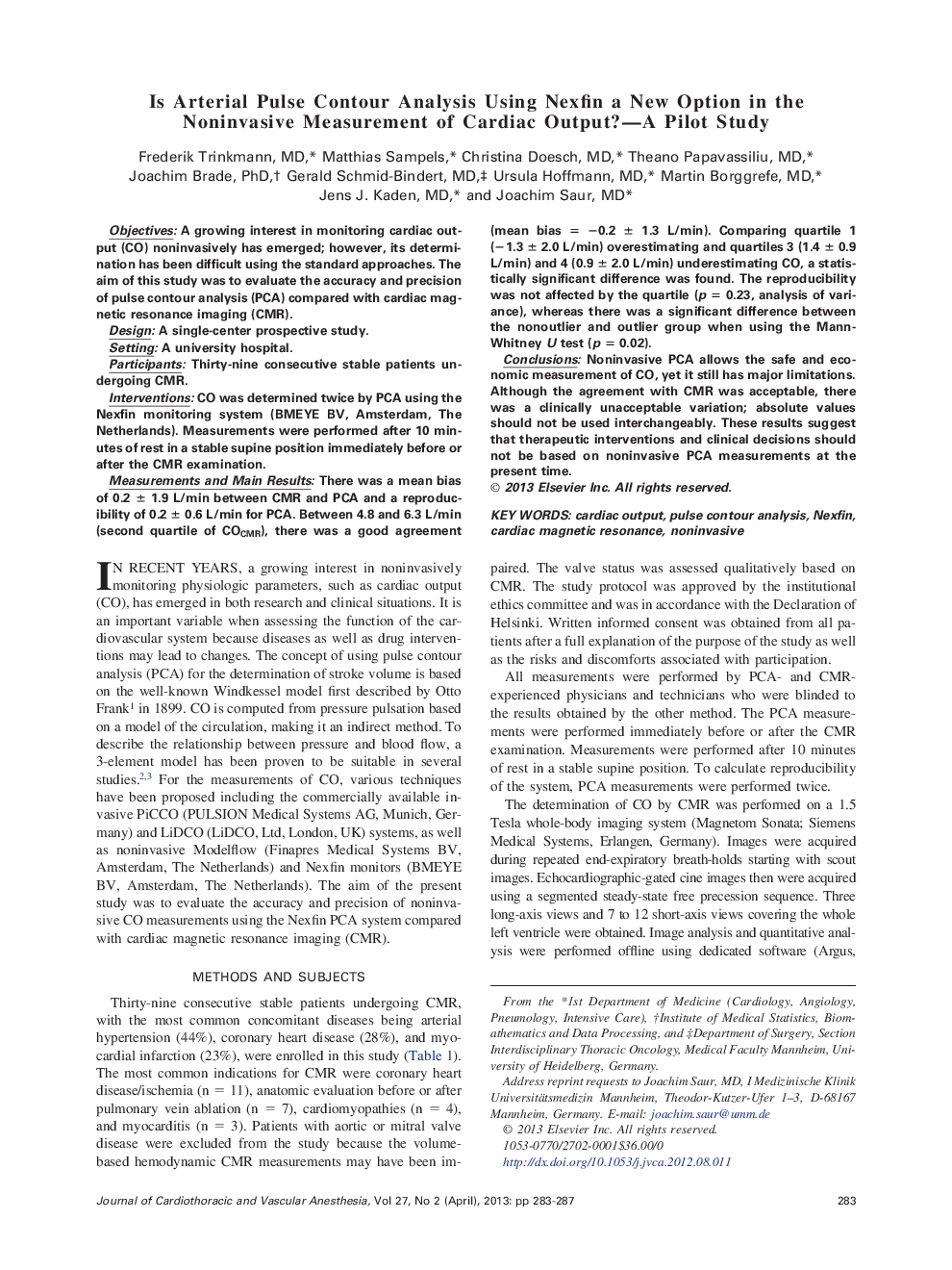| Article ID | Journal | Published Year | Pages | File Type |
|---|---|---|---|---|
| 2760286 | Journal of Cardiothoracic and Vascular Anesthesia | 2013 | 5 Pages |
ObjectivesA growing interest in monitoring cardiac output (CO) noninvasively has emerged; however, its determination has been difficult using the standard approaches. The aim of this study was to evaluate the accuracy and precision of pulse contour analysis (PCA) compared with cardiac magnetic resonance imaging (CMR).DesignA single-center prospective study.SettingA university hospital.ParticipantsThirty-nine consecutive stable patients undergoing CMR.InterventionsCO was determined twice by PCA using the Nexfin monitoring system (BMEYE BV, Amsterdam, The Netherlands). Measurements were performed after 10 minutes of rest in a stable supine position immediately before or after the CMR examination.Measurements and Main ResultsThere was a mean bias of 0.2 ± 1.9 L/min between CMR and PCA and a reproducibility of 0.2 ± 0.6 L/min for PCA. Between 4.8 and 6.3 L/min (second quartile of COCMR), there was a good agreement (mean bias = −0.2 ± 1.3 L/min). Comparing quartile 1 (−1.3 ± 2.0 L/min) overestimating and quartiles 3 (1.4 ± 0.9 L/min) and 4 (0.9 ± 2.0 L/min) underestimating CO, a statistically significant difference was found. The reproducibility was not affected by the quartile (p = 0.23, analysis of variance), whereas there was a significant difference between the nonoutlier and outlier group when using the Mann-Whitney U test (p = 0.02).ConclusionsNoninvasive PCA allows the safe and economic measurement of CO, yet it still has major limitations. Although the agreement with CMR was acceptable, there was a clinically unacceptable variation; absolute values should not be used interchangeably. These results suggest that therapeutic interventions and clinical decisions should not be based on noninvasive PCA measurements at the present time.
